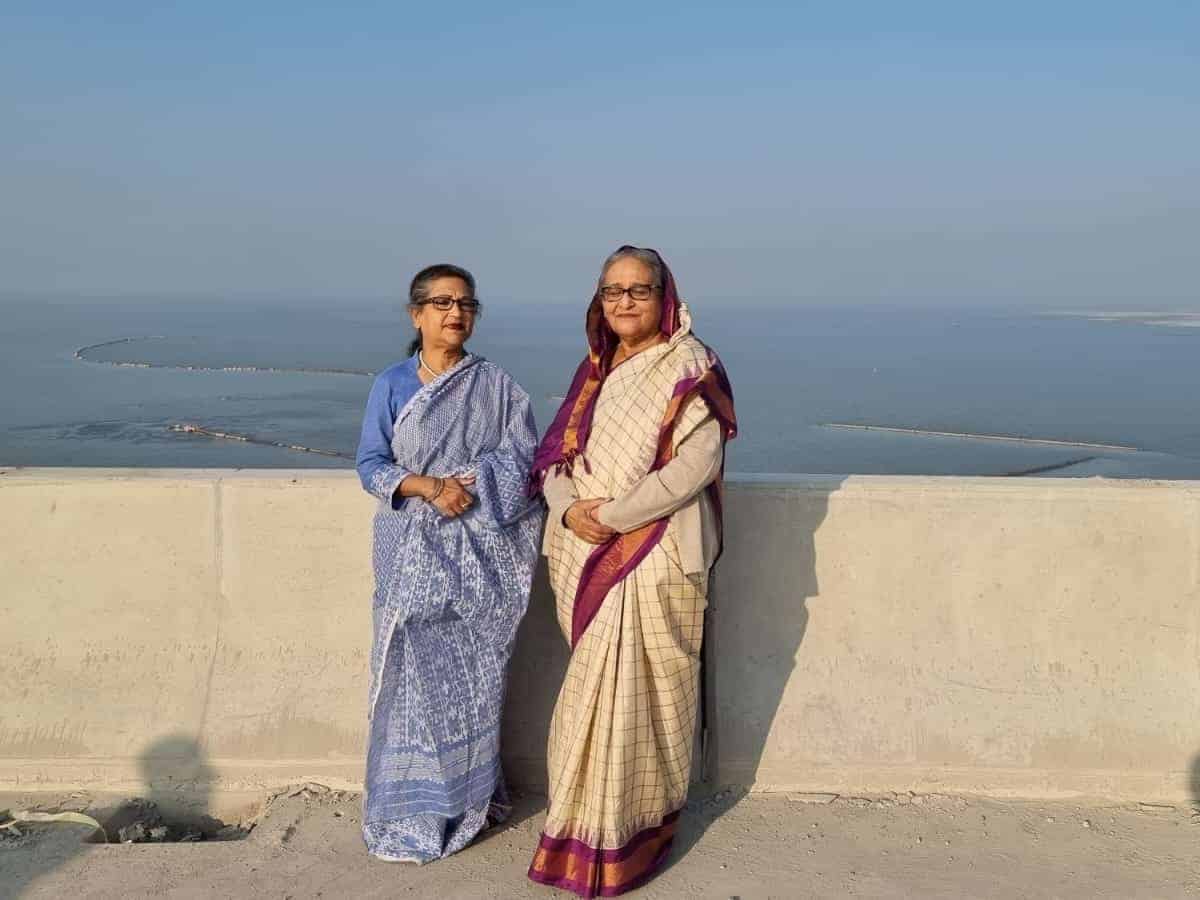Dhaka: Bangladesh Prime Minister Sheikh Hasina, accompanied by her sister Sheikh Rehana, on Friday visited the Padma Bridge for the first time after winning her challenge with the World Bank, where she had vowed that the country would complete the project by itself after its allegations of corruption.
Rejecting the allegations, Sheikh Hasina had, in 2014, challenged the World Bank, announcing that the country would build the bridge with funds of its people. The allegations of corruption were proved unfounded in a Canadian court. An investigation by the Anti-Corruption Commission (ACC) also did not find evidence of corruption in the project.
Hasina reached the bridge soon after 7 a.m. on Friday, and took a two-kilometre stroll on it with her sister, the only survivors of Bangabandhu Sheikh Mujibur Rahman’s family after the August 1975 assassination virtually wiped it out.
The Premier looked all cheerful and content as she inspected the progress of the construction sites of the much-awaited bridge.
After attending a breakfast event arranged by the Bangladesh Bridge Authority at the Janzira point, Hasina left the area at around 10 a.m.
The Padma Bridge became visible on September 30, 2017, with the installation of the first span on pillars 37 and 38. After 38 months, the work of installing all the spans was completed.
After the last span installation on December 9, the Padma Multipurpose Bridge is now 6,150 metres long and ranks just over the Oland Bridge of Sweden.
The bridge’s toll plaza, connecting road, and other structures have fallen in Shibchar of Madaripur, as they involve three districts. The bridge’s length on the river body is 6.15km, being joined with 41 spans – each 150 metres long – on 42 pillars.
The two-storey metal and concrete bridge offer road transport to ply on the upper floor and trains on the lower.
There will be 2,917 roadway slabs for road transports and 2,959 railway slabs for trains. Of these, 1,239 road slabs and 1,860 railway slabs have been installed as of November 30.
In addition, a 4-kilometer viaduct on both sides of the bridge has already been constructed and it includes no steel span.
However, according to Project Director Md Shafiqul Islam, the bridgework may be completed by 2022 as the work has been delayed due to the pandemic.
In 2007, the Executive Committee of the National Economic Council approved the Padma Bridge construction project at a cost of 10,162 crore takas.
The bridge was earlier slated to be commissioned by 2013. Later, the project expenditure was revised up thrice – to 20,507 crore takas in 2011, 28,793 crore takas in 2016, and 30,193 crore takas in 2018. As a result, the project cost has almost tripled.
The World Bank had pledged $1,200 million, the ADB $615 million, the JICA $415 million, and the IDB $140 million for the $2.9 billion Padma Bridge project aiming at better connectivity for the people of 19 south-western districts.

